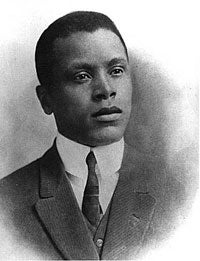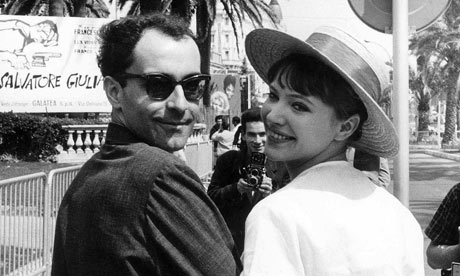Jean-Luc Godard has a solution to Europe's financial crisis. It's as simple and ingenious as one would expect from the man who, with all the young guns of the Nouvelle Vague, freed cinema from its studio straitjacket in the 1960s. "The Greeks gave us logic. We owe them for that. It was Aristotle who came up with the big 'therefore'. As in, 'You don't love me any more, therefore . . . ' Or, 'I found you in bed with another man, therefore . . . ' We use this word millions of times, to make our most important decisions. It's about time we started paying for it.
- Film Socialisme
- Production year: 2010
- Country: Rest of the world
- Cert (UK): PG
- Runtime: 101 mins
- Directors: Jean-Luc Godard
- Cast: Catherine Tanvier, Christian Sinniger, Patti Smith, Robert Maloubier
"If every time we use the word therefore, we have to pay 10 euros to Greece, the crisis will be over in one day, and the Greeks will not have to sell the Parthenon to the Germans. We have the technology to track down all those therefores on Google. We can even bill people by iPhone. Every time Angela Merkel tells the Greeks we lent you all this money, therefore you must pay us back with interest, she must therefore first pay them their royalties."
He laughs, I laugh, someone listening in the next room laughs. Godard is, of course, against the whole bourgeois capitalist concept of copyright: he gives it the finger in a none-too-subtle gag at the end of Film Socialisme, the latest salvo in his 40-year war against Hollywood, released last week. Cinema's enfant terrible may be 80, but he's lost none of his genius for contrarian cheek.
Film Socialisme is vintage late-Godard in all its baffling glory: a numbing assault on the eyes, brain and the buttocks, that takes liberties with your patience and mental endurance, but has an undeniable originality. There is no story of course, heavens no. Instead, we are at sea on a cacophonous Mediterranean cruise ship, a floating Las Vegas drowning in over-consumption, where a Greek chorus of actors and philosophers wander among the middle-aged passengers quoting Bismarck, Beckett, Derrida, Conrad and Goethe in French, German, Russian and Arabic.
It's not an easy watch. The will to live frequently slips away as images of the last tortured century pass before our eyes – only to be revived again by Godard's sublime shots of the ship and the sea, or some random quotation that hits its mark. "To be right, to be 20, to keep hope," we hear as Patti Smith wanders the decks with her guitar, like a sullen teenager. So is this the future of film, as Godard's supporters claim? I'm not sure. All I know is that no one else makes films like this. And what other major director would put the whole thing on YouTube, albeit playing at lightning speed, the day before it was released?
A man eaten by his own myth
Godard's diehard disciples see it not just as a metaphor for Europe – a ship of aging malcontents adrift in their own history – but as a manifesto for a "new republic of images", free from the dead hand of corporate ownership and intellectual property laws. This new cinema will be cut and pasted together in a world beyond copyright, where droit d'auteur will soon seem as medieval as droit du seigneur. Until now, Godard has shed little light on his creation, having gone awol just as the film was premiered at Cannes this year, leaving only the message: "Because of Greek-style problems, I cannot oblige you at Cannes. I would go to the death for the festival, but not a step further."
This is the kind of cartoon Godard we are familiar with, the Godard of the grand gesture, the Godard who has been a stock character of intellectual jokes ever since he veered off into Maoist obscurantism after rewriting the rules of cinema in the early 1960s with films like A Bout de Souffle (Breathless). Egged on by Raoul Coutard, his brilliant director of photography, he shot on the fly with handheld cameras and no script to speak of, opening the way not just for the French New Wave but a whole generation of independent directors the world over. Scorsese, Tarantino, Altman, Fassbinder, De Palma, Soderbergh, Jarmusch, Paul Thomas Anderson – in one way or another, they and countless others modelled themselves on this enigmatic Swiss director with an inexhaustible line in snappy aphorisms that will keep film theorists in work for centuries: "Photography is truth. The cinema is truth 24 times per second"; "A story should have a beginning, a middle and an end, but not necessarily in that order."
Somewhere along the way, though, the man appears to have been eaten by the myth. The Godard sitting before me in a Paris flat, wearing a T-shirt so tight it gives him the air of a bristly, bespectacled Buddha awoken from his afternoon nap, is so much more human, so much more childlike than the legend. He has a slight lisp. He is playful and patient. He tries to answer questions others might take as insults. He makes sense, mostly. It is hard to see him as "the shit" fellow New Wave director François Truffaut fell out with in the 1970s.
He is even nice about Hollywood, or at least the Hollywood of the 1930s-1950s, "that could make films like no one else could. Now even the Norwegians can make films as bad as the Americans." He raves about the non-narrative form of westerns. "All you know is that a stranger rides into town." I ask about the pressure of being seen as the auteur's auteur, a permanent visionary. "I am not an auteur, well, not now anyway," he says as casually, as if it was like giving up smoking. "We once believed we were auteurs but we weren't. We had no idea, really. Film is over. It's sad nobody is really exploring it. But what to do? And anyway, with mobile phones and everything, everyone is now an auteur."
Godard rarely gives interviews and often cancels them. For more than 30 years, he has tried to find a new language of film, locking himself away in his garage in the dull Swiss town of Rolle. A French philosopher told me he once spent a week waiting in vain outside his house for an audience. I ask about the significance of the llama and the donkey in Film Socialisme, which have prompted much chin-stroking among critics. "The truth is that they were in the field next to the petrol station in Switzerland where we shot the sequence. Voilà. No mystery. I use what I find." He says people often find meaning in his films that are not there. I begin to wonder if Godard has been greatly misunderstood: is he in fact much simpler than he seems?
"People never ask the right questions," he says. "My answer to the person who will never ask me the right question about this film is that the image I really like is the one about Palestine, the trapeze artists." This is a metaphor for the beauty that will be born the day Jews and Arabs learn to work together.
We are edging towards the prickly subject of Godard's alleged antisemitism, a subject that reared its head again last year when he got an honorary Oscar. His hostility to Israel and strong support for the Palestinian cause has often been conflated with a hatred of Jews, a claim he says is "idiotic". The philosopher Bernard Henri-Lévy, who worked with him on a number of aborted projects about "the Jewish being", once called him a man "trying to cure himself of his antisemitism". This may or may not come from his upper-class Swiss-French family, many of whom were sympathetic to Vichy. In Film Socialisme, he again puts his hand in the wasps' nest with such lines as: "How strange that Hollywood should be invented by the Jews."
The existential Lassie
Another book accusing him of antisemitism appeared a few weeks ago by the intellectual Alain Fleischer. Fleischer defines an antisemite as anyone opposed to Israel's existence; he admits, however, that Godard was an antisemite only in so much as "a Jew can sometimes be". I try to goad him into a reply but he is having none of it. "It makes me sad. He says the man has said this, but the man and the work are very different things." I ask if that means the man may be antisemitic but the work is not, but Godard waves his hands. "No, no! It's all ridiculous."
I make to leave, asking what he's doing next, and he jumps up like a teenager and goes rummaging in the next room, returning with a script. "Take it," Godard says, dedicating it to "the guardian of cinematography", for some reason thinking I may be able to help get it made. I'm touched, but deeply saddened that a great pioneer of cinema is having to huckster like this.
Or is he? Is he, at 80, just getting it out there – like putting his film on YouTube? As I walk down the Boulevard Magenta, I wonder if I should make it myself, since copyright and the idea of the auteur no longer mean anything to Godard. It's called Adieu to Language, which it very much is. It's about a couple and a dog, and life and death and everything else, though the dog is the real star. Yes, maybe I should make it. But is the world ready yet for Lassie: One Dog's Quest for Purpose in an Existential Universe? Or, crazier still, a Godard film with a happy ending?






